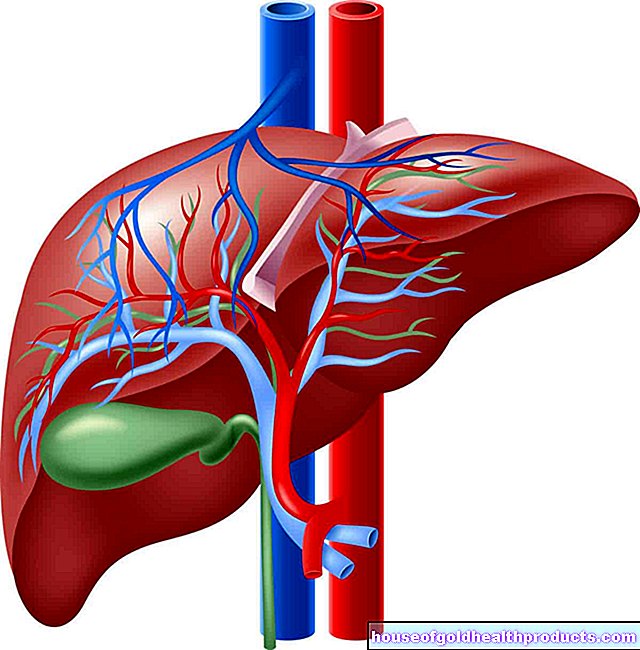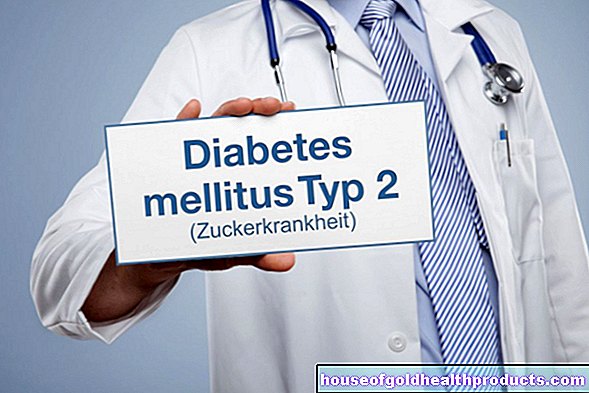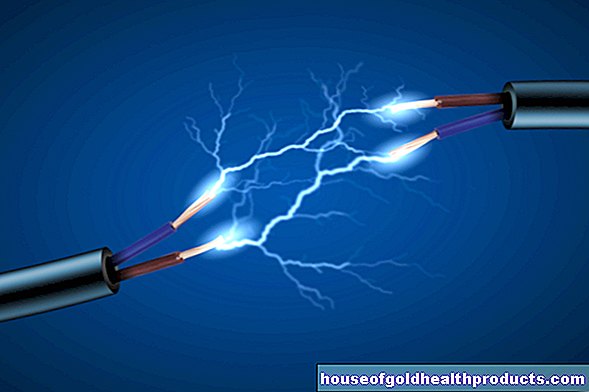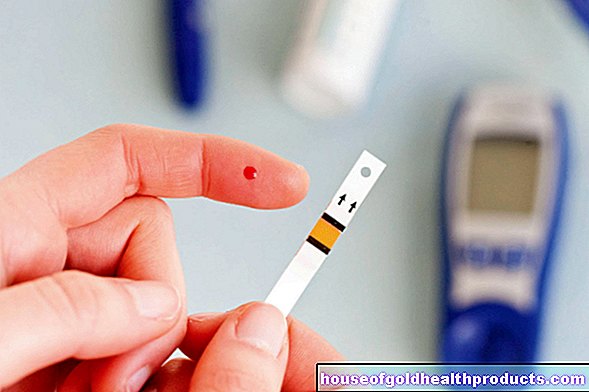Digoxin
All content is checked by medical journalists.Digoxin is a cardiac glycoside of vegetable origin - it is contained in foxglove species (digitalis). The active ingredient is used to treat heart failure (heart failure) and certain types of irregular heartbeat. You can find out more about the use, effects and possible side effects of digoxin here!
This is how digoxin works
Digoxin belongs to the group of digitalis glycosides (such as digitoxin). All substances in this group have the same profile of action and only differ in how quickly and for how long they work in the body.
Digoxin blocks an enzyme in the cell membrane of the heart muscle cells, the so-called magnesium-dependent Na / K-ATPase. This enzyme channels sodium ions out of the cell and, in return, potassium ions into the cell. As a result of the enzyme blockade, the sodium concentration increases and the potassium concentration decreases within the cells. The increased sodium concentration now influences the sodium / calcium exchanger in such a way that fewer calcium ions are transported out of the cell.
The result is an increased contraction force of the heart muscles (positive inotropic effect). Digoxin also slows down the heart rate (negative chronotropic effect) and inhibits the conduction of excitation (negative dromotropic effect).
Digoxin uptake, breakdown and excretion
The cardiac glycoside can be given by mouth (orally) or directly into a vein (intravenously). When administered intravenously, the drug takes effect after 15 to 30 minutes and reaches its maximum after 1.5 to 5 hours. In the case of oral administration, the onset of action and the achievement of the maximum effect take slightly longer. Digoxin is mainly excreted in the urine via the kidneys. About one to two days after administration, half of the active ingredient has left the body again.
When is digoxin used?
Digoxin is prescribed for heart failure (heart failure) and certain types of irregular heartbeat (such as atrial fibrillation).
This is how digoxin is used
The therapy with the cardiac glycoside is started with a saturation: The patient is given 0.25 milligrams of digoxin twice a day for ingestion (tablet) or 0.25 milligrams intravenously for two days for two days. Thereafter, a lower maintenance dose of 0.25 to 0.375 milligrams once a day is given. The doctor determines the exact dose individually - as well as the duration of treatment.
What are the side effects of digoxin?
Important digoxin side effects are, for example, cardiac arrhythmias, nausea, vomiting, tiredness, confusion, headaches, psychoses, color vision disorders and general visual disturbances. In men, there are rarer cases of enlargement of the mammary glands (gynecomastia) and liver dysfunction. Sometimes changes in the blood count such as a lack of blood platelets (thrombocytopenia) also develop.
What should be considered when using digoxin?
Digoxin should not be used if the patient:
- is allergic to the active ingredient or other cardiac glycosides
- has too high a calcium level (hypercalcaemia)
- suffers from hypertrophic obstructive cardiomyopathy (genetic heart disease with enlargement of the heart muscle)
In patients with kidney failure (renal insufficiency), the dose of the cardiac agent must be reduced.
Interactions
Digoxin can interact with many other drugs. A number of drugs can affect the absorption of digoxin by the body. These include activated charcoal (for diarrhea and poisoning), cholestyramine (cholesterol-lowering drug), neomycin (antibiotic), sulfasalazine (anti-inflammatory) and antacids (for heartburn and gastrointestinal ulcers).
Other drugs can increase the bioavailability of the cardiac glycoside in the body, for example certain antibiotics (tetracyclines, erythromycin). Some drugs reduce the excretion of digoxin, such as quinidine, amiodarone, verapamil and diltiazem (agents used to treat irregular heartbeats) and spironolactone (a diuretic).
Further interactions are possible, which the attending physician will take into account when prescribing.
pregnancy and breast feeding period
Cardiac glycosides such as Digitoxin may be used during pregnancy for heart failure and as a remedy for cardiac arrhythmias in the mother or the unborn child.
A mother may breastfeed her child even during digoxin therapy. If the cardiac glycoside is administered intravenously, you can then take a two-hour break from breastfeeding and thus reduce the likelihood that the infant will ingest the active ingredient through the breast milk.
How to get medication with digoxin
Digoxin requires a prescription and is only available from a pharmacy with a prescription.
Tags: foot care home remedies therapies















.jpg)













